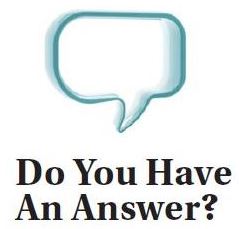Question: The Delicate Sales Dance

A Distributor Asks: I find myself struggling with knowing how aggressive I should be in my sales strategy. If I email a prospect who is not a buyer, how should I proceed so that my dialogue effectively produces a lead, or a sale, without being too pushy?
I like to add a little levity. Something like, “Well, it’s just like me to be lost again. Would you mind helping me out and letting me know who is the best person to speak with regarding promotional products?” Never make it sound like a directive or like you’re demanding help.
Neal Spencer
President
Horseshoe Marketing
DBA Kaeser & Blair
Fort Collins, Colorado
Don’t ask, “Do you …” That is a yes or no question. Ask, “Who do you know …” They should answer with a name.
Andrea Georgeson
Branded Merchandise Specialist
APP Imprints California
Eureka, California
Try to build the relationship. It will serve you well when you get to the buyer. People buy from people they know, like and trust. And even though it is more than 50 years old, reread Dale Carnegie’s book, How To Win Friends And Influence People. Bob Berg, author of the Go-Giver series, is another good one in this area. I use this approach in social media, and it has worked wonders to help me deepen and strengthen relationships. Also, always end the email with, “I hope things are going well for you and that you’re happier than a bird with a French fry.”
John King
Owner, promotional specialist and consultant
Promoking, a Kaeser & Blair dealer
Huntington Beach, California
Don’t write. Call them. They’ll want to get you off the phone and will give you the name of the person quickly versus having to wait for an email reply.
Johanna Gottlieb
Vice President of Sales, Midwest
Axis Promotions Powered by HALO
Chicago, Illinois
PPAI 159158, D11
I get results when I stop emailing. Pick up the phone and say, “I hope you can give me some guidance.” People love to help. Ask for the connection to the decision maker. Treat the “gatekeeper” with the utmost respect, because they are often the one who determines what gets done.
Sue Kinch, MAS
Owner
Tangico
Pontiac, Michigan
PPAI 651709, S2
–––––––––––––––––––––––––––––––––––––––––––––––––––––––––––
A Supplier Asks: What have other companies found to be the most effective paid advertising strategy? For my business, aside from industry trade shows, it’s been email campaigns and SAGE advertising. What are your experiences?
You will often hear me remind distributors that if they claim to their clients that the most effective means of acquiring and keeping clients is promotional products, then they need to be their own best case study and build their brand using the medium of their claims. If a distributor can’t stand out from their own competitors using branded merchandise, they have no business telling these companies that they can help them stand out from theirs.
The same theory applies to suppliers. With such a crowded marketplace, we can have the coolest, most amazing products on the planet, but if no one knows about them, you aren’t going to sell any of them. Optimizing our products in search engines is imperative to our success, but just like distributors need to use promo to sell promo to their clients, we need to be a product of the product and use our own wares as marketing tools to reach distributors as well. We need to put products in distributors’ hands and use creative messaging and a clear call to action to drive them to our websites, lead them to follow us and engage with us on social media, remind them to customize our ZoomCatalogs and even prompt them to search for certain item numbers on SAGE. PPAI does a great job of telling us that promotional products work, but quite frankly, it’s up to all of us to prove it.
That’s my 10 cents.
Charity Gibson
National Account Coordinator
Peerless Umbrella Co.
Newark, New Jersey
PPAI 112666, S10
Your own products should be among your best brand ambassadors, and to the point that a call-to-action will drive distributors to your website, take a moment to reflect on your website, your only 24-hour on-call resource. While virtually every supplier has a website, many of them are simply inadequate, outdated placeholders. Virtually, all your marketing and advertising dollars will drive traffic to your website—but what happens when distributors get there? Does your site inform, enlighten and engage? Or does it lie there, inert, boring and essentially useless?
A well-designed website can be an invaluable resource tool for your customers, and it can save you money, too. (Ask me—I have specific examples.) And a great site can reduce inbound calls and questions. Conversely, a poor site all but says, “try our competitors instead.”
Scott A. Nussinow, MAS
Executive Vice President
ArtworkServicesUSA.com
Auburn, Maine
PPAI 231735

A Distributor Asks: I’m curious as to the policies, consensus or best practices for using a supplier’s product images? I’m new to the industry and working to gather content across social media platforms, and I’d like to highlight different supplier products that clients may find interesting.
What’s Your Answer?
Email your answers to Question@ppai.org for the chance to be featured in a future issue of PPB.
–––––––––––––––––––––––––––––––––––––––––––––––––––––––––––
Danielle Renda is associate editor of PPB.

